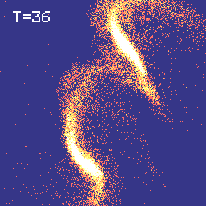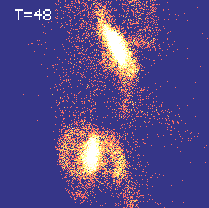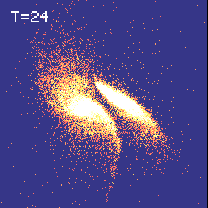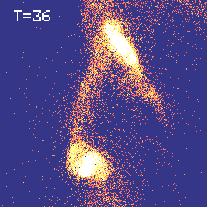The Dynamical Evolution of Galaxy Mergers
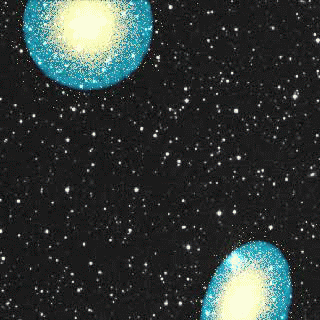 |
Physics involved:
-
Gravity:N-body treecodes
-
Gas dynamics: Smooth Particle Hydrodynamics
-
Star formation: density/temperature dependent
Schmidt law or Jeans criterion
-
Feedback: thermal/kinetic effects on gas
Dynamical Phases:
-
Collisional perturbation
-
Self gravitating response
-
Gas inflow + activity
-
Merger and violent relaxation
-
Settling down
|
The total timescale for merging depends on the
properties of the interaction (the mass ratio and orbital energy),
and on the distribution of dark matter in the system on large scales  |
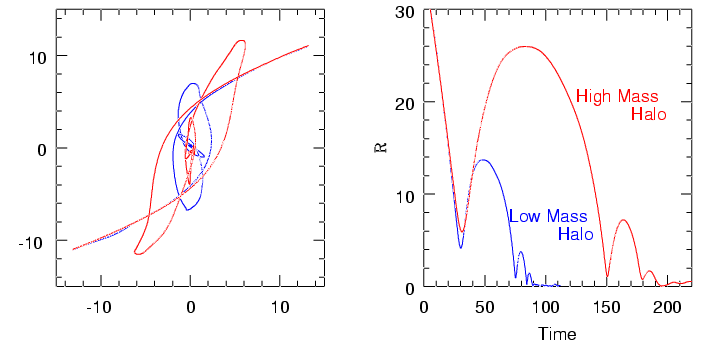 |
The self-gravitating response is highly dependent on the
structural details of the interacting disks on smaller scales, and in particular
the resiliency of the disk against growing bar modes:
This has important ramifications for:
-
the timing of gas inflows
-
the spatial distribution of star formation (gradients, nuclear
disks, cusps, etc.)
-
the differences between interactions at low and high redshift
-
the structural and kinematic properties of the merger remnants



